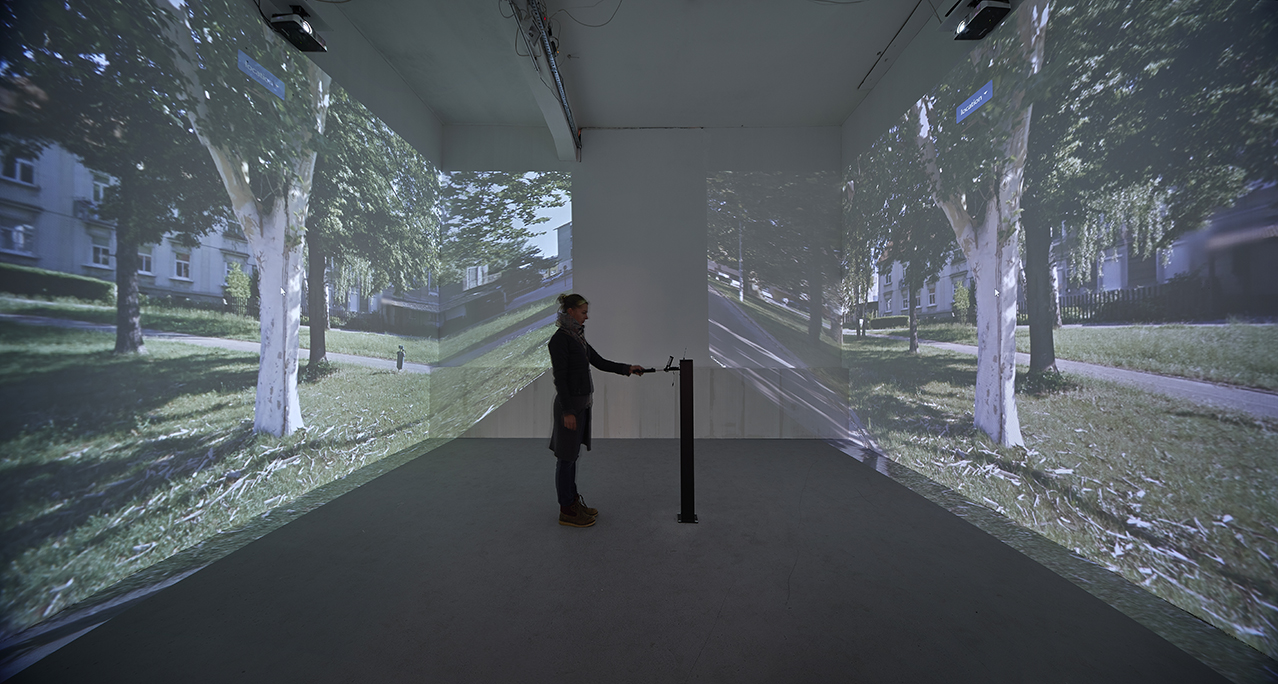BridA/Tom Kerševan,
Sendi Mango,
Jurij Pavlica (SI)
The False Mirror, 2019
intermedia installation
In 1936, Man Ray said of Magritte's famed painting Le Faux Miroir (The False Mirror) that the painting sees as much as it itself is seen. Back then, that statement could only be understood as a product of an artistic interpretation in the context of the surrealist manifesto that, according to Breton, defined surrealism as depicting the supernatural, the inconceivable, and expressing a higher reality through associations powered by unconscious mental mechanisms. Almost a century later, technology and the speed at which information is shared are the mechanisms that have driven the perception of images to inconceivability. We could even say we are past the point of no return, that we have reached the horizon where the barrier between the seer and the seen can no longer be clearly determined. Along with sight, images have gained the possibility to respond and interact with us in real time. Our image is no longer an indicator of personal contact, it is an upgraded, surrealist profile made up of a multitude of pulsing images of our everyday actions. The image of ourselves has become a reflection that we gaze upon like an image behind a glass, across which we run our fingers or cursor. It is slowly becoming more important than us, opening up the inevitable question of its fragility and consequences.
The False Mirror project deconstructs the established models of our image. Models that attempt to show us who we really are or what we really need. It reveals the gaps that have been intentionally left out in the development of mobile applications, be it to serve the commer-cial interests of technology providers or the insatiable need for a more beautiful and lasting image of ourselves. The development and supply of visual communication interfaces does not enable active participation, transforming us into idle spectators of our everchanging reflection. The project uses thought-out computer applications and interfaces, as well as pur-pose built tools to provide an alternative experience of a contemporary visual self-image, integrated into the body of online communication and social media. Unexpected diagrams of abstractions and changes build upon our expectations. Established patterns or products of visual communication systems are presented in a way that offers up alternative ways to use these technologies. In a concrete example, the user is faced with different possibilities and trends of developing apps and media like selfie applications, Google Street interactive navigation and social media, going beyond commercial logic in search of artistic potential.
BridA/Tom Kerševan, Sendi Mango, Jurij Pavlica is a collective made up of graduates from the Venice Academy of Fine Arts, formed in 1996 during their university years. The group that produces artwork across a wide spectrum of contemporary artistic practices exhibits both locally and internationally, and has participated in numerous international residency programs, workshops and seminars. BridA's works have been purchased for a score of international contemporary art collections. In 2015 they received the highest award of the Municipality of Nova Gorica, the France Bevk Prize, commemorating 20 years of their successful activity; in 2018 they received the international Tesla Award. They are recipients of the Iaspis scholarship awarded by the Swedish Ministry of Culture, and Culture Bridges, awarded by the British Council under the EU.
http://www.brida-kud.si/
 Photo: Damjan Švarc
Photo: Damjan Švarc